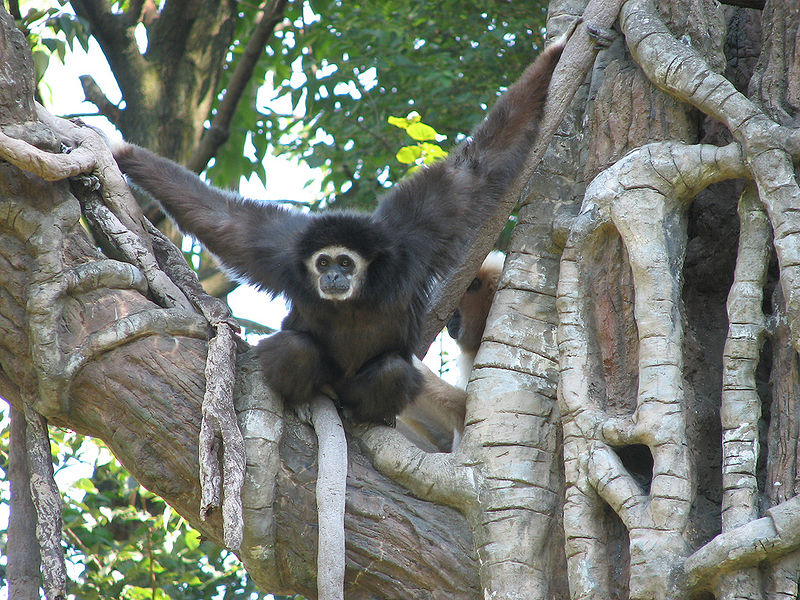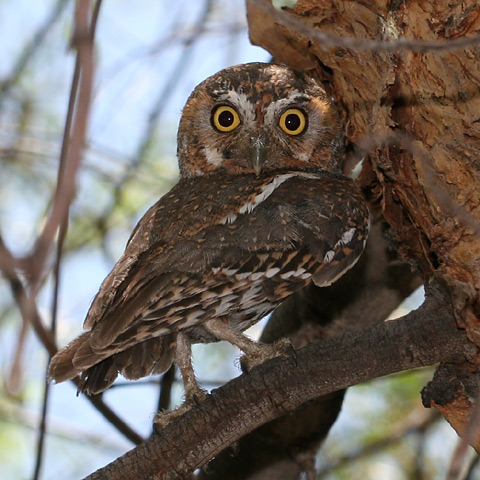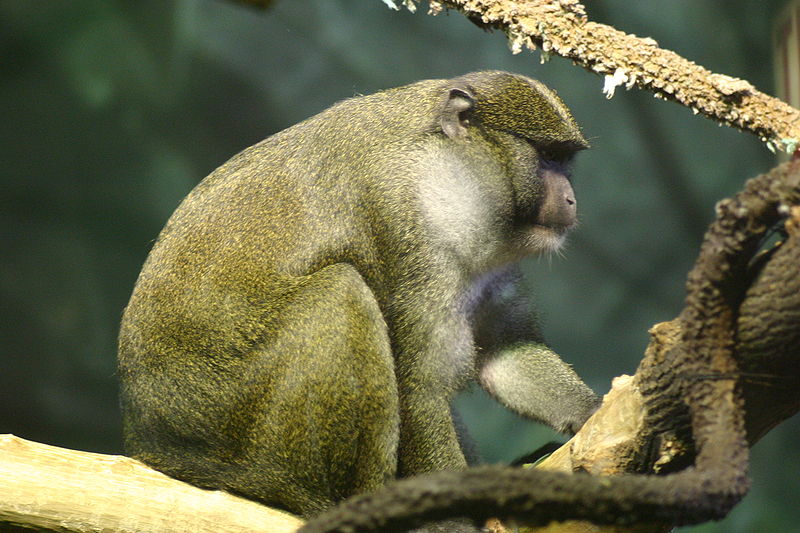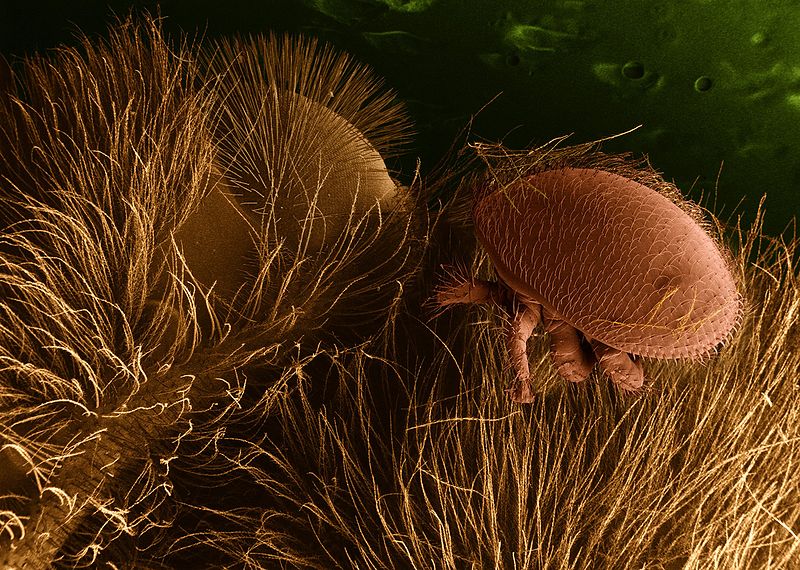
Welcome back ladies and gentleman. I am having some major issues with my internet right now so I hopefully I will be able to post today’s Wild Fact. Even if it doesn’t post properly, I will be sure to phone each and every one of you to tell you about today’s fact. See, that’s how excited I am to talk about an endangered ape called a Gibbon. These little guys belong to the Lesser Apes family which is closely related to the Greater Apes. Why is this interesting? Well, the Greater Apes family members include chimpanzees, gorillas, orangutans and of course, humans. Yep, the Gibbon pictured above might just be at your next family reunion. Actually, that is probably just your hairy Uncle Ned stuffing his face with the free food but you can see the resemblance, can’t you?
So what are some of the traits that separate the gibbon from their greater ape cousins? Well for starters, they are smaller, the males and females look similar, they don’t make nests and they look more like a monkey than the Great Apes do. Aren’t you glad you are part of the Great Ape family? Otherwise you would resemble a monkey. If you want to get a photo of the gibbon for your family tree than you had better be quick with the camera. They are excellent at swinging through the tree tops. In fact they can swing up to 15 m (50′) at speeds as high as 56 km/h (35 mph). And if they are really creeped out that their family member is taking pictures of them they can always decide to leap over 8 m (26′). The gibbon has been identified as the fastest and most agile of the tree-dwelling, non-flying mammal species. So, good luck catching these little guys!
Since the gibbon lives high in the trees they have very few natural predators. It will usually be a leopard, snake or bird of prey that will pluck a gibbon from their comfy treetop home. Even with few predators most gibbon species are classified as threatened or endangered. Once again the need for settled land is displacing an animal from its natural habitat. This habitat destruction is pushing this ape to extinction.
Gibbon Fast Fact – The gibbon has very long arms and in some cases even longer than their legs. These long arms are great for providing balance as they are walking through the trees. The gibbon is able to walk on two legs using their long arms for balance. I guess they are the tight-rope walkers of the forest.







How do you not like something that cute…he’s gorgeous! I know this isn’t your specialty but do you know what kind of tree that is. I love how the roots wrapped all around itself.
I should have known you would have loved anything even remotely looking like a monkey. After all you did marry dad – hahahaha!
I am not sure what type of tree this White Handed Gibbon is hanging out in. I can’t even venture a guess based on their habitat since this picture was taken at the Cincinnati Zoo so the tree could be from anywhere. If any of our reader’s knows the answer then please post in the comments… Thanks!
I knew I’ve seen this guy somewhere? Perhaps when I visited the Night Safari here…
http://www.travel-singapore-with-me.com/singapore-night-safari.html
Thanks for posting that link, Agapelife! I bet a night safari would be pretty fun.
Did you actually go on this safari? Did you bring a Gibbon home with you?
Yes, the animals were so close and their sounds distinctive, but I did not see the shows. That will be for the next time, hopefully.
That is awesome that you were that close to the animals. You will have to take the shows in next time and let us all know about it.